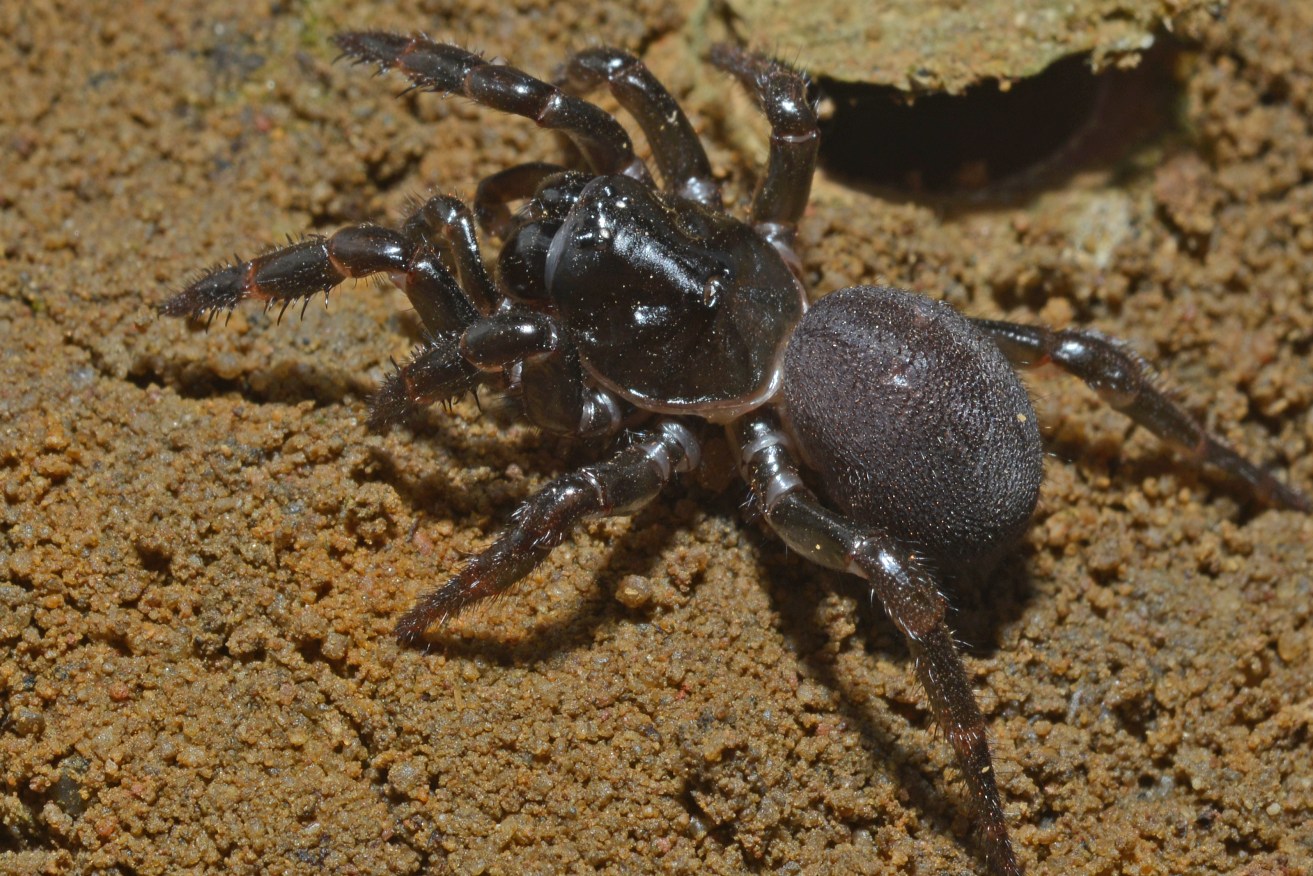Spider’s epic ocean voyage to KI from Africa
A species of spider, thought to only move a few metres in their entire lives, may actually have crossed the Indian Ocean to get to Kangaroo Island, new research suggests.

A female Moggridgea spider at American River on Kangaroo Island. Photo: Nick Birks
The trapdoor spider – Moggridgea Rainbowi – is found only on South Australia’s Kangaroo Island, and was originally thought to have “split” from its South African relations when the giant land masses separated millions of years ago.
But research by the University of Adelaide now suggests the spider is much more closely related to its South African counterpart and probably crossed the Indian Ocean to get here.
PhD student Sophie Harrison says the genetic link between the two types of spiders is much stronger, meaning the spiders had to have travelled to Australia after it was formed as a continent but prior to human habitation.
“Rafting is the best hypothesis that fits the situation,” Harrison said.
“It seems like a really strange concept but in a lot of ways they are much better adapted to dispersing in that way than mammals or other vertebrates; they have a stable burrow and a low metabolic rate – they don’t need much food.”
Researchers theorise that the spiders made the 10,000 km trip across the ocean on large chunks of land or vegetation that were washed out to sea.
“At first thought, this does seem incredible,” says Professor Andrew Austin, Harrison’s PhD supervisor.
“But there are precedents of such ocean travel. Moggridgea are also found on the Comoros volcanic islands, 340 km from mainland Africa, however this is a relatively short distance compared with the 10,000km from South Africa to Kangaroo Island.”
The spiders, which measure about the size of a 10-cent piece, hatch close to the ocean on Kangaroo Island and set up burrows nearby, where they stay for the rest of their lives, only lunging out of their trapdoors at night to catch prey.
– AAP




